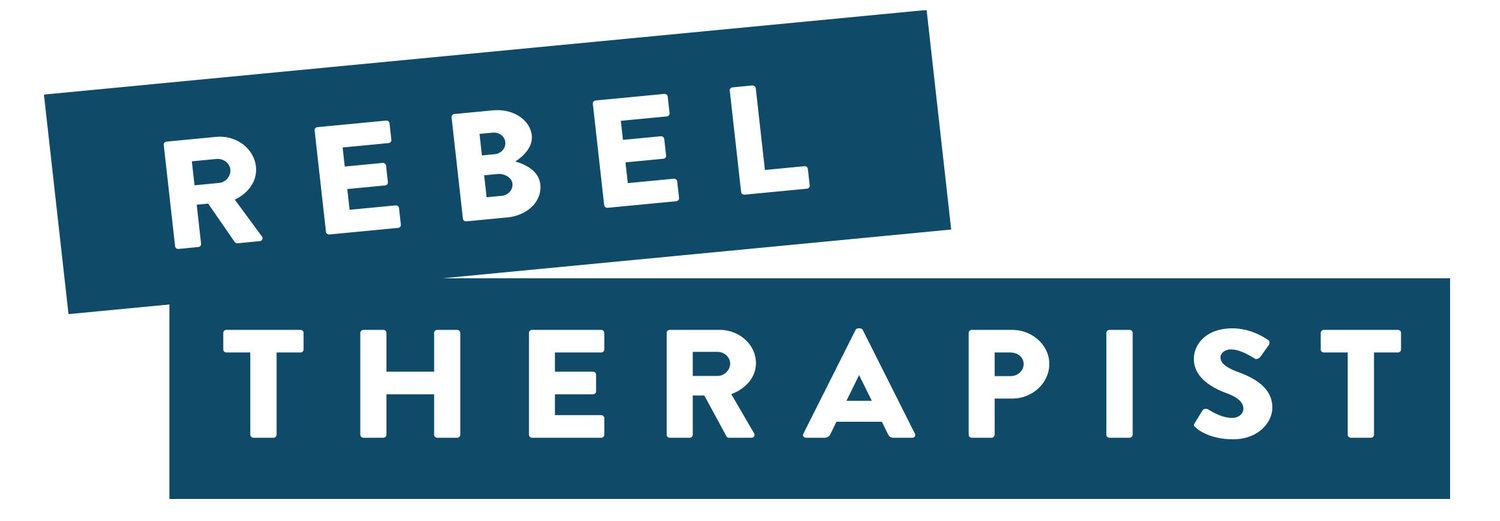If you're creating or revamping your website, you want to hear what Kat Love has to say. She's a web designer who builds sites just for therapists, and she was generous enough to allow me to pick her brain.
Warning: You’ll wish you’d seen this before you created your website!
Below are some gems from the interview.
One common misconception:
A common misconception is that your web designer will create your entire site. Web designers don’t create the written content for your site. You need to have your content prepared before the designer begins. You can work with a copywriter who will create the content for you, or you can go through the process of creating that content yourself.
Therapists usually underestimate how much time and energy it takes to write even one good page for a site. Strategizing, writing, and editing good content is time consuming.
Mistakes Kat sees therapists making over and over again:
Many therapists have a lack of clarity about what’s necessary in terms of both design and functionality on your website. For example, having share buttons on a services page distracts the visitor from reading about how you can help them. It sends the wrong message to ask the visitor to share your services page on social media. It’s important to think carefully about what you want to invite your visitor to do.
More is NOT always better.
When your visitor is pulled in many directions on your website, they are less likely to take the right next step. Having too many calls to action leads to paralysis. You as the professional need to guide your visitor to the next thing they should do on your site.
Your website is often the first impression a potential client has of you.
If they arrive on your site and experiences chaos and overwhelm, they might expect to feel that way in therapy with you. If they go to your site and find the experience clear and comfortable, they will expect to find therapy with you clear and comfortable too.
Advice about images:
Images are really important. They communicate on a different level from anything else. Colors, layouts, spacing, and copy matter, but images are in their own category because they are so quickly understood and felt. We need to be thoughtful when we choose images.
Three categories of images to use on your site:
Images that validate their experience: For example, if you’re working with people who struggle with depression, you would use images that connect with what depression feels like.
Destination images: These images represent where the visitor wants to be. For the example of depression, you might choose images that bring up feelings of calm, balance, or freedom. Feel into what your ideal clients desire in their life and choose images to reflect those things.
Calming images: These are more emotionally neutral. They promote a sense of trust and don’t elicit emotional activation. One example of a calming image would be a beach.
From these 3 categories, choose images that speak to the entire journey your potential clients travel through in therapy with you.
The process you use when choosing your images is similar to the process you need to use when you write your copy. You need to identify the pain your clients experience, the gains your clients hope for, and the solution you offer.
Before You Hire A Designer:
If you’ve got a do-it-yourself website and want to work with a designer to bring your site to the next level, here are some things you can do to prepare and have a better result.
Clarity: Get clarity around what it is you do and who you serve. If you’re clear on who you are trying to attract and how you serve them, you’ve got the foundation for everything you create in your business, including your website
Copy: Assess what’s working on your current site and what isn’t. Evaluate whether your copy is actually speaking to your ideal client. Answer these questions: Is your navigation easy or difficult? Is your organization of content logical? Look at what’s on each page from the visitor’s point of view. (and remember you can hire help for this!)
Design: Think about the color, images, and layout. See what’s working and not working with the design on your current site. Research by visiting other websites and tracking your emotions when you see different things. (How do you feel when you look at a website that is bright red?) When you hire your designer, you’ll be the best client ever, and they’ll really be able to help you create an effective site.
Links
You're gonna want more from Kat.
Here's her article about how to choose images for your website.
Kat Love's website: KatLove.com
Ready for more help building your private practice? Sign up to receive tips from me each week in your inbox. Never spam.









